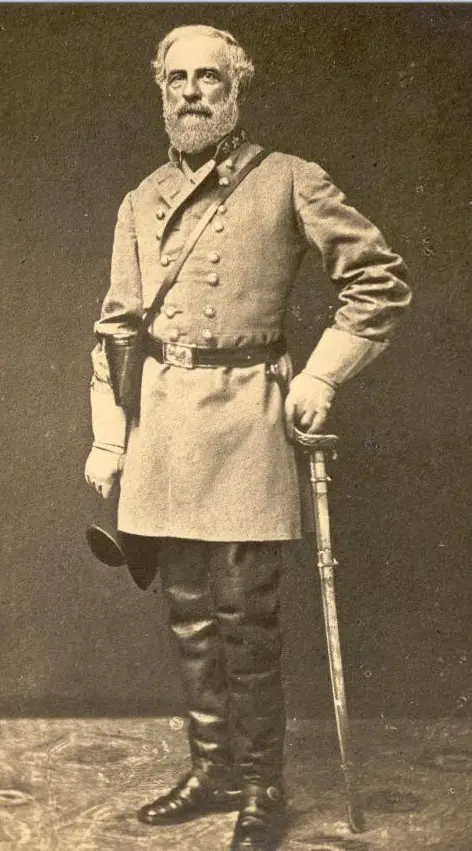fitting that I post this article.

Each one of us, at one time or another, have come across a boss or supervisor who has so lacking in ability that it boggles the mind on how they could have possibly risen to the position of authority. A person cannot be respected as a leader if they always talk down and belittle their coworkers and subordinates. Thankfully there comes the opposite end of the spectrum. People who stand head and shoulders above the rest with their ability to command, delegate and communicate.
Some of us have the gift of"Constructively criticism" and the ability to get a point across without damaging the working dynamic.
The following is an excerpt from Reminiscences of The Civil War
"The left of my line rested on the west bank of Hatcher's Run. A.P. Hill's Corps was on the east side, with it's right flank upon the same stream. The commanding general directed that I build a fort at the left of my line, and that A.P. Hill construct a similar one near it on the opposite side of the run.General Hill became ill after the order was received, and the construction of his fort was not pressed. Indeed, the weather was so severe and the roads so nearly impassable that there was no urgent necessity for the haste. General Lee, however, who habitually interested himself in the smaller as well as the larger matters connected with the army, did not forget these forts. Riding up to my Headquarters on a cold morning in January, 1865, he requested me to ride with him to see the forts. As we mounted he said: "We will go by General ----'s quarters and ask him to accompany us, and we will examine both forts." When this officer joined us (he was temporarily in command of Hill's Corps during the latter's absence on sick-leave), General Lee at once asked: "General Gordon, how are you getting along with your fort?"
"Very well, sir. It is nearly finished."
Turning to the officer, he asked: "Well General ------, how is the work upon your fort progressing?"
This officer, who had felt no special responsibility for the fort, as he was only temporarily in charge, was considerably embarrassed by the general's pointed inquiry. He really had little or no knowledge of the amount of work done upon it, but ventured, after some hesitation, the reply: "I think the fort on my side of the run is also about finished, sir."
Passing by my work after a short halt, we rode to the point at which the A.P. Hill fort was to be located. No fort was there; the work was scarcely begun. General Lee reined up his horse, and looking first at the place where the fort was to be, and then at the officer, he said: "General, you say the fort is about finished?"
"I must have misunderstood my engineers, sir."
" But you did not speak of your engineers. You spoke of the fort as nearly completed."
This officer was riding a superb animal which General Lee knew had been presented to his wife. His extreme embarrassment made him unusually nervous, and his agitation was imparted to the high mettled animal, which became restless and was not easily controlled. General Lee in the blandest manner asked: "General, doesn't Mrs. ---- ride that horse occasionally?"
"Yes, sir," he replied.
"Well, general, you know that I am very much interested in Mrs. -----'s safety. I fear that horse is too nervous for her to ride without danger, and I suggest that, in order to make him more quiet, you ride him at least once every day to this fort."
This was his only reprimand; but no amount of severity on the part of the commander-in- chief could have been more trying to the sensibilities of the officer, who was an admirable soldier, commanding General Lee's entire confidence. The officer's mortification was so overwhelming that, on the return, he rode considerably in the rear. General Lee observed this, and could not resist the impulse to mitigate, as far as possible, the pang caused by the rebuke that he had felt compelled to administer. Halting his horse for a moment and looking back at the officer in the rear, he called to him: "Ride up and join us General. I want to ask you and General Gordon how long this war is to last." (1)
General Lee rode with both subordinate officers back to the rear areas and engaged in conversation on the length of the war and news from relatives back home.. The General made his point about the importance of the fortifications being built.
Reminiscences of the Civil War by John B. Gordon. Ch 26 pg 378-381.

























